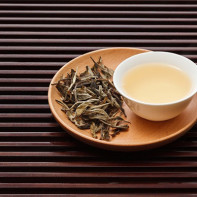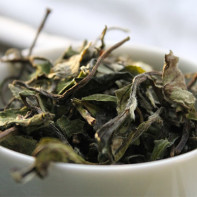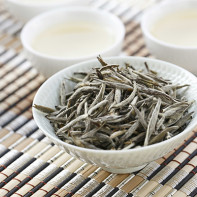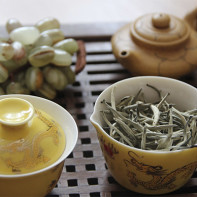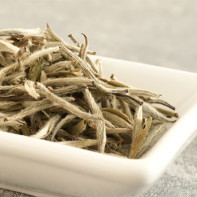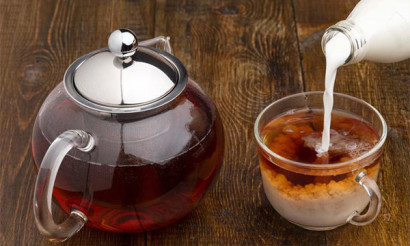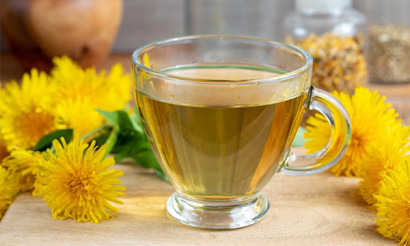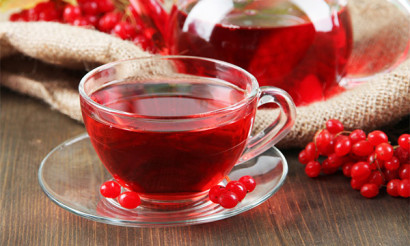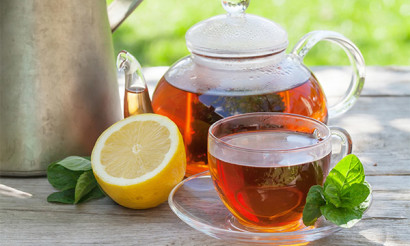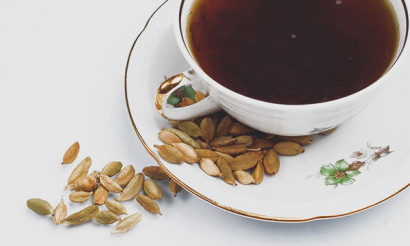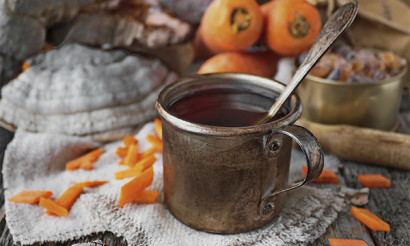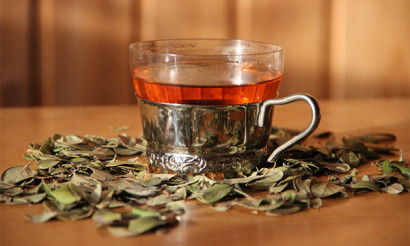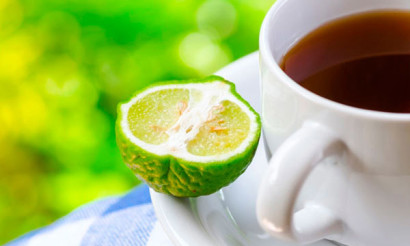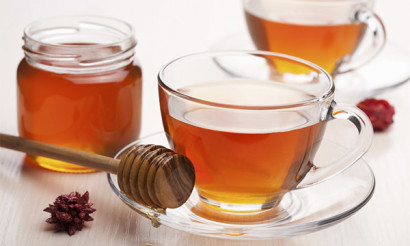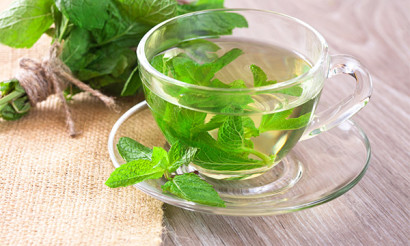White Tea: Composition, Benefits and Contraindications
The divine drink of aristocrats - this is the name of white tea. In ancient China, only the emperor and his family members could afford to enjoy this kind of drink. The therapeutic properties of this drink were discovered back in the X-XI centuries: during the measles epidemic in the Celestial Empire, white tea was used to prevent the disease. The delicate flavor and floral aroma of white tea have the ability to create a festive atmosphere even on the cloudiest and coldest day.
- What white tea is and what it looks like
- Types .
- What is the difference between white tea and green tea
- Which is healthier
- Composition and calories
- White Tea Benefits
- General benefits
- For Women
- For Men
- While pregnant
- Breastfeeding
- For children
- Slimming
- Administration details for diseases
- Hypertension
- Diabetes mellitus
- Cholecystitis
- Gastritis
- Pancreatitis
- Cancer
- Obesity
- White Tea in Beauty Therapy
- Restoring mask for dry hair
- Peppermint Rinse
- Brightening Mask for Blondes
- Nourishing Mask
- Snow White Tonic
- Skin Cleansing Mask
- Face Pigment Spots Mask
- Harm and Contraindications
- How to choose and store
- How to brew white tea correctly
- Interesting Facts about Tea
What is white tea and what does it look like?
White tea is considered one of China's oldest medicinal beverages. It belongs to the non-fermented varieties because young, only slightly blossomed tea leaves with buds are used for preparation, undergoing a minimum number of treatments.
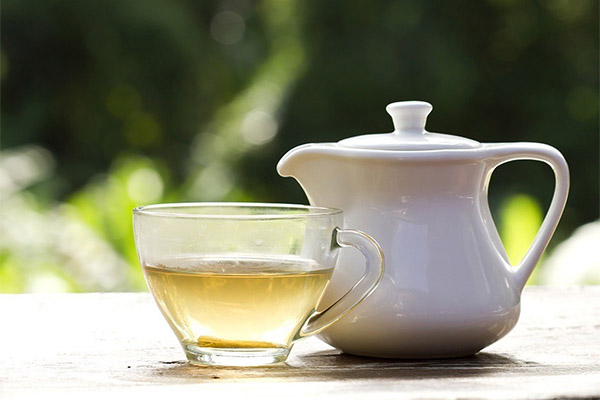
The finished drink has a slightly greenish or lemony hue. There are herbal notes in the rich floral aroma. This white tea has a delicate flavor with a hint of astringency and natural sweetness.
This variety uses tea bushes that have distinctive elongated leaves and buds covered in white downy hairs. They grow wild only in China. Not only naturally occurring varieties are used for production, but also new varieties bred specifically by Celestial breeders. Among the first to be bred were unique tea trees with larger leaves: the varieties "White Narcissus", "Xiao Bai" and "Da Bai Cha Shu" (the largest tea bush). It is from the leaves of these varieties that one of the best drinks in the world is obtained.
White tea was first produced in Fujian Province, and later in the neighboring territories of Shuiqi and Zhenghe. These three provinces supply the world market with elite varieties of tea.
Later the cultivation of elite varieties of tea began in India. In the plantations of Sri Lanka special tea bushes have been growing for quite a long time, but only one kind of white tea is produced.
Types
The Celestial Empire produces more than 12 varieties of white tea. The most popular are:
- White Peony. This type is produced only in a single place in China - Fujian Province. Only the young leaves with buds, which have just opened, are chosen for this variety. It is harvested once a year, in the spring. "White Peony is a rare variety, which is why it is expensive.
- White Silver Needles - An elite variety of white tea. It got its name "Silver Threads" because of the unusual delicate buds, which have a silvery shade of tufts. Only a few days of the spring season are set aside for harvesting the leaves. The tea buds and leaves are processed by hand.
- White Pu-erh Tea. - The most amazing and rare variety. It is completely free of bitterness and has a strikingly different flavor. These tea bushes grow in small quantities only on Chinese highland plantations. The process of harvesting and processing the leaves is quite labor-intensive, which is why white Puerh tea is only available in very small quantities and sold at a very high price.
Low quality white teas that are sold at affordable prices include Gong Mei and Shou Mei.
Only two types of white tea are produced in India:
- White Darjeeling has a sweet, delicate taste and an unusual golden color. It is considered the best Indian white tea.
- Assam White. The tea bushes grow in one place on earth, the Assam region of India. It has the sweetest taste of all white teas and is considered the rarest variety. You can buy the real White Assam by pre-order at the factory. Its price is so high that only few can buy it.
The only kind of white tea produced in Sri Lanka is Ceylon White. Its unusual aroma has a pine scent, and the taste has honey notes.
Among connoisseurs and tea connoisseurs, Ceylon White is considered a royal drink.
What is the difference between green and white tea?
White and green tea belong to the useful beverages that have excellent taste qualities. The distinguishing characteristics of these varieties include:
- The production process. After harvesting, the leaves for white tea are not rolled or roasted, so they are less susceptible to oxidative processes. They are dried in a specially created environment under the influence of sunlight, so the finished drink has a delicate taste. After harvesting, the green tea leaves are dried by artificial heating.
- Raw materials. White tea consists of buds and young leaves, whereas green tea consists of large, fully opened leaves. Although some varieties have tea bush buds added.
- Flavor profile. White tea has a sweeter, more natural flavor and delicacy.
- Cost. Although there are some quite expensive ones among the green teas, the price of white tea is much higher.
White tea, unlike green tea, refers to weakly fermented beverages.
Which is healthier
It is impossible to say for sure which kind of tea, green or white, is healthier. Both varieties contain antioxidants of plant origin. Given the results of recent laboratory studies, white tea has advantages over green tea in preventing the formation of cancer cells.
White tea does not have the invigorating properties of green tea. It contains little caffeine (some types have none at all), so it has a more calming effect on the body than green tea.
Composition and calories
The raw materials used in the production of white tea are not subjected to thermal processing. The whole vitamin and mineral complex, a gift of nature, is present in the finished drink.
The chemical composition of this tea variety contains:
- B, A, C vitamins;
- essential oils and plant antioxidants;
- amino acids;
- tannin.
Macro- and micronutrients: potassium, calcium, magnesium, fluorine, iron, phosphorus and sodium. The caloric value of the product varies from 0 to 4 kcal per 100 grams and depends on the amount of sweetener added.
Useful properties of white tea
General Benefits
Ancient Chinese physicians considered this type of tea the best remedy against various infectious diseases, internal organ pathologies, mental pain. It was also recommended as a means to slow the aging process.
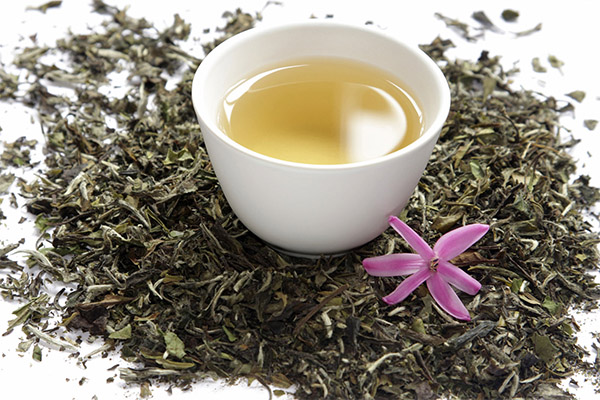
Beneficial effects on the body:
- Normalization of pressure, strengthening the walls of blood vessels - reducing the degree of risk of cardiovascular disease.
- Reducing cholesterol levels, preventing the appearance of plaques and blood clots.
- Cleansing the body of harmful substances by removing toxins.
- Elimination of nervous disorders: depression, chronic fatigue, overexcitation.
- Strengthening effect on bone tissue due to the included in the tea leaf fluoride and calcium.
- Antibacterial properties to fight rotavirus infections, gum disease and tooth decay.
- Elimination of pain in rheumatism, gout, sciatica, arthritis due to anti-inflammatory qualities.
- Protection of the body from the effects of bacteria, microbes and viruses, stimulating the immune system.
- Improvement of the metabolism.
White tea has an effective and beneficial effect on the body, regardless of age or gender.
For women
Calming properties of tea have a favorable effect on the female body, reducing irritability and suppressing increased excitability during the period of critical days and age-related hormonal changes. Normalizing the water balance in the body, white tea has a positive effect on a woman's appearance: circles disappear under the eyes, smooth skin on the face, a rare phenomenon are and swollen feet at the end of the day.
The presence of vitamin complex in the drink improves vision, reducing eye fatigue after working at the computer. 1-2 cups of white tea a day can not only improve your general condition, but also energize you.
For Men
In its native land, white tea is considered a balm for men's health. It restores strength, increases potency and reduces the risk of prostate cancer. This kind of tea is especially useful for men whose work is associated with strong mental stress and a lot of stressful situations.
When pregnant
The minimal caffeine content of white tea makes it safe for pregnant women to drink. The rich vitamin complex, including vital calcium and fluoride, antimicrobial properties have a beneficial effect on the overall condition of the mother and unborn child. A cup of weakly brewed beverage can eliminate the inexplicable feeling of anxiety, increased excitability, inherent in pregnant women. But do not abuse white tea, because it interferes with the absorption of folic acid.
When breastfeeding
Strengthening and soothing qualities of white tea have a positive effect on the well-being of the mother, nursing baby. Useful elements, though not in large quantities, are passed on to the baby with the milk. They improve the intestinal function of the newborn, reducing pain during colic, and normalize sleep.
For babies
Despite the fact that Chinese children drink tea almost from the first days of life, European pediatricians recommend including it in children's diet from 3-4 years of age. White tea has a positive effect on the development of the child's immune system and strengthens the body. Equally important is the drink's ability to improve metabolism, which has a positive effect on the stomach and intestines. Although this variety refers to weakly fermented, children should only drink tea of medium and weak strength.
When losing weight
White tea improves the metabolic process, promoting rapid digestion of food. It prevents the formation of fat deposits. Its diuretic properties prevent the retention of excess fluid in the body. Due to these qualities, the drink is included in the daily diet of people suffering from obesity.
Peculiarities of consumption for diseases
A cup of fragrant white tea with a delightful taste will not only improve your mood and warm you up in cold weather, but will also help the body to fight some diseases.
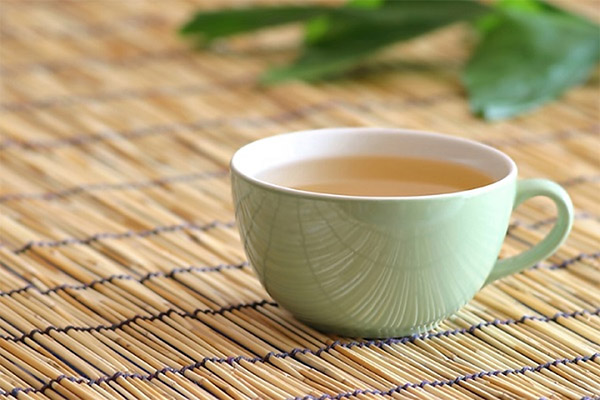
Hypertension
White tea acts as a diuretic, cleanses blood vessels, preventing the formation of thrombosis, reduces cholesterol. People with high blood pressure are recommended to include it in the daily diet. The daily dose - 700 ml of warm tea, without additives and sweeteners.
Diabetes mellitus
The vitamin-mineral complex contained in white tea normalizes the level of sugar in the pathology of degree II, reduces the risk of developing the disease. The drink prevents the symptoms of diabetes: polydipsia (excessive thirst), increased insulin secretion, reduced glucose levels.
To improve well-being with diabetes, you should drink tea 3-4 times a day 20-30 minutes after the main meal. The duration of intake - 6 months, then you should take a short break.
Cholecystitis
White tea normalizes the process of excretion of bile. Antibacterial qualities prevent the formation of inflammation in the bile ducts, the liver. A cup of tea will alleviate and relieve cramps. In the period of exacerbation, it is recommended to drink 600 ml of drink per day.
Gastritis
The drink improves the digestive process, so in diseases of the stomach it is consumed immediately after a meal. Daily it is recommended to drink 2-3 cups of white tea. Refrain from drinking it during an acute illness. The drink should be treated with caution if the disease is chronic in nature.
Pancreatitis .
Have a beneficial effect on the work of the pancreas and do not harm the organ white tea can only observe certain rules of consumption:
- It is not necessary to brew too strong drink.
- It is better to refuse additives: honey, sugar, fructose, milk.
- Buy only pure white tea: without herbs, flavor enhancers.
During the exacerbation of the disease, it is recommended to drink 0.5 liters of drink to reduce painful sensations.
Cancer
White tea has antimutagenic properties and is considered a chemopreventive and anticancer natural remedy. Antioxidants, flavonoids in the drink prevent cancer cells from spreading, preventing metastases. The fortifying effects of white tea help the body cope with disease and reduce pain.
Studies conducted by American scientists have proven the effectiveness of white tea for stomach, prostate, and colon cancer.
Obesity
Nutritionists include this drink in the diets of people who are overweight. White tea drunk after a meal speeds up the digestion of food and the breakdown of fats, carbohydrates, helping with weight management. In addition, it replenishes the body with vitamins and minerals.
This type of tea is an excellent natural remedy that increases the body's resistance to colds during the fall and spring flu epidemics.
White tea in cosmetology
Because of its high content of beneficial substances for skin and hair, white tea extract is used in the production of cosmetic preparations. It is included in decorative cosmetics, creams, soaps, toothpaste, masks, scrubs and lotions.
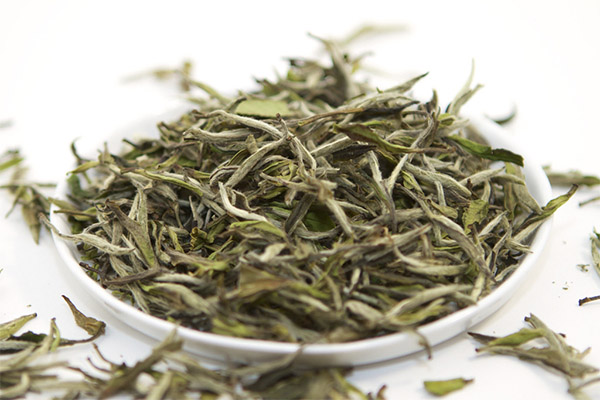
This component makes the skin smoother and firmer, copes well with wrinkles and black spots, slows the aging process and maintains a healthy complexion. It is most often used in products for problem skin. It helps to normalize the water balance, eliminating redness, irritation and removing unwanted shine.
An important property of white tea is a whitening effect. After the use of masks or lotions noticeably improves the color of the skin. It acquires a lighter shade, pigment spots and freckles become almost imperceptible.
White tea extract protects the body from harmful UV rays, regenerates and supports cells, thus helping the skin to always look young and beautiful.
In hair masks and shampoos, this ingredient helps awaken and activate hair follicles. Hair becomes stronger and silkier, easy to comb, no tangles, the ends are soldered. The scalp is moisturized, dandruff, irritation and flaking disappear. After the application of products with white tea extract hair looks much better.
To prepare means for face and hair care based on white tea can also be done at home.
Restorative mask for dry hair
This means perfectly nourishes hair after a summer vacation at the seaside.
- 50 ml of strong white tea brew.
- 20 ml of linseed oil.
- Raw egg yolk.
Mix all the ingredients, using oil and brew at room temperature. Apply to the strands and scalp. Cover your head with a towel. Wash the mask off after 40 minutes.
Peppermint Rinse
Ingredients:
- White tea - 60 ml.
- Peppermint - 30 g.
- Boiled hot water - 1 liter.
Place the ingredients in a bowl. Pour boiling water. Stir thoroughly. Leave the rinse to infuse for about half an hour.
Apply after each shampooing. Apply the rinse on wet clean hair, hold for 5-7 minutes. After the time has passed, rinse thoroughly. After application the hair will become silky and soft, it will be easy to comb and will be a little more voluminous.
Brightening mask for blondes
The product is excellent for thin hair. It strengthens them, speeds them up, gives volume and a little coloring. After application, the hair becomes thick and strong.
- 40 grams of cottage cheese.
- 50ml white tea.
- 25g sour cream.
Mash the cottage cheese until homogeneous, getting rid of large lumps. Transfer it to a deep bowl. Gradually add the sour cream, remembering to stir it. Pour the mixture with the previously prepared weak warm tea. Leave it for half an hour.
After washing your head, apply the mask to slightly damp hair. Spread on the entire length from roots to ends. Wrap the hair in a warm terry towel. Hold for 10-15 minutes. After abundantly rinse with warm water. Repeat the procedure once or twice a week for one month.
Nourishing mask
This product contains only two ingredients: white clay (4 tbsp.) and white tea (80 ml.). Gradually add the clay to the brew and stir it. The result will be a mask resembling a sour creamy mixture. With the resulting mask to lubricate the hair. Leave it on for no more than 15 minutes.
Tonic "Snow White".
This easy-to-make remedy will not only improve the complexion, but with constant use will noticeably reduce expression lines.
- 100 ml of strongly brewed white tea.
- 2 tbsp. cucumber juice.
- 15 ml freshly squeezed lemon juice.
Cool brew, pour cucumber and lemon juice. Wipe skin after morning and evening washing. Store the tonic in the fridge or in a cool place.
Mask "Clear Skin".
Excellent in the fight against acne in adolescence.
- 5 tbsp of brewed white tea.
- 2 tbsp. apple cider vinegar.
- White clay.
Mix the brew with vinegar. Pour some clay and stir it up. The mask should have a thin consistency. Apply it to face and leave it to harden (about 10-15 minutes). Wash off with running water.
Mask for pigmented spots on the face
Ingredients:
- Brew - 120 ml.
- Fine oat flakes - 50 g.
- 1/2 part banana.
Pour the flakes with warm brew and leave to infuse for 7 minutes. Put this mixture into a blender and add a banana. Grind until mashed. Apply the mask for 10 minutes.
Harms and contraindications
White tea is not capable of having a negative impact on the human body. It does not contain any harmful components. This kind of tea does not cause allergies, but requires caution in the use of people with intolerance to caffeine (although it contains quite a little).
In small quantities, tea should be taken during exacerbation of chronic diseases of internal organs.
White tea is contraindicated in kidney disease: its diuretic properties can cause undesirable consequences in the work of this organ.
Unpleasant sensations from drinking tea (vomiting, discomfort in the stomach, intestinal upset, headache) appear only with excessive abuse.
How to choose and store
This White tea has a rather high price: the price for 100 grams - from 3200 rubles. To reduce the price of the product, some manufacturers add green tea leaves, herbs, fruits, flavor enhancers. You can buy really good white tea in the Middle Kingdom or on the websites of Chinese producers.
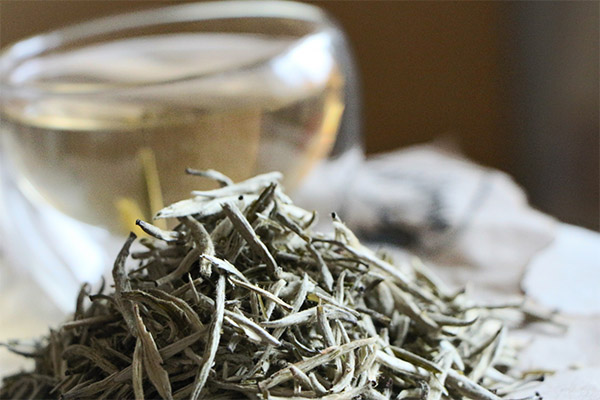
Regardless of the variety, tea cannot go completely bad. Over time, it loses flavor as the brewing material dries out or becomes saturated with moisture.
To ensure that white tea stays tasty and does not lose its nutritional properties as long as possible, it is important to
- Do not purchase large quantities at once.
- Pour the purchased tea into a ceramic container with an airtight lid.
- Store it in a kitchen cupboard away from the stove.
- Do not place white tea near spices, spices, herbs or coffee beans as the tea leaves will absorb the aromas that surround them.
When stored correctly, good-quality white tea will stay fresh for 12-18 months.
How to brew white tea correctly
In the motherland, there is a special attitude toward this drink. The Chinese don't just brew and drink tea. This process involves a number of traditions and rituals.
Enjoy the wonderful taste of white tea if you adhere to the basic rules of brewing:
- Use only purified or spring water.
- Pour the brew in boiling water, not more than 55-75°C.
- Always keep the ratio of 3-5 grams of tea and 150 ml of water.
- Infuse brewed at least 3 minutes, during this time, essential oils and useful properties saturate the water.
The flavor will be fully developed if no sweeteners, milk or cream are added.
A brew of quality white tea is used 2-3 times.
Tea Facts of Interest
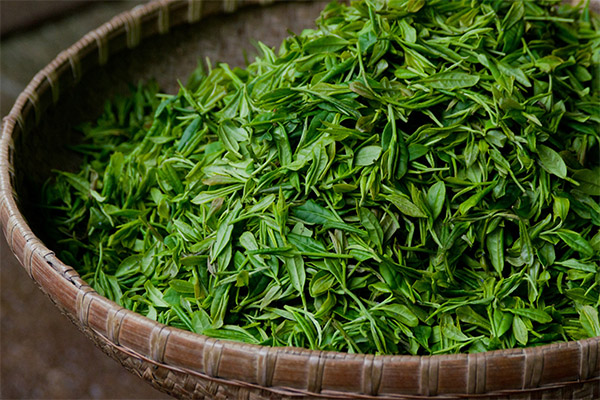
- Tea pickers are not allowed to eat onions, garlic, and tobacco before work. These restrictions are related to the increased sensitivity of tea leaves to extraneous flavors: they absorb them rather quickly.
- White tea was first tasted in China over 800 years ago.
- White tea varieties are among the most expensive in the world. One factor that affects the price is the short harvest period - only 2-3 days a year and only during the dawn hours.
- China is considered the main supplier of tea to the world market. It accounts for 1/4 of all production volumes.
- Every year, on December 15, connoisseurs of this wonderful and healthy drink celebrate "Tea Day".
- The most expensive tea in the world is DaHongPao, which means "big red robe". One hundred grams of the drink costs $1,025.
- The inhabitants of the Earth drink 3 billion cups of tea of varying capacities every day.
- Iced tea was first served in 1904 at the St. Louis World's Fair. At the time of the event were the hottest days in history.
- In the fourteenth and fifteenth centuries, tournaments of tea connoisseurs were held in Japan. Contestants were asked to identify the variety of tea and name the country and the exact place of cultivation.
«Important: All information on this site is provided for informational purposes only. for informational purposes only. Before applying any recommendations, consult a health care professional. specialist. Neither the editors nor the authors shall be held liable for any possible harm caused by materials."

